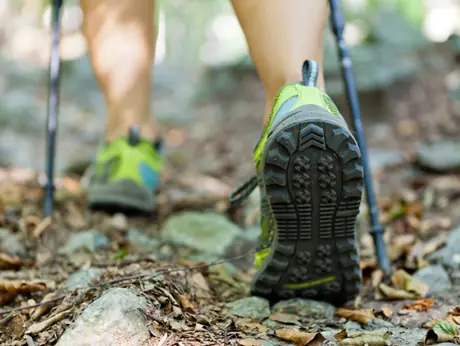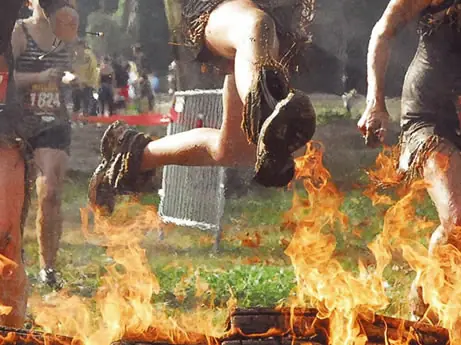
It's time to break the winter workout rut. No more treadmill runs and spinning classes. Break up the monotony with a hiking workout that will help put different muscles to work, boost cardio, and even burn some fat.
Folks may think of hiking as a multi-hour activity reserved for weekends and holidays. But quick 45-to 90-minute hikes can fit into most weekday schedules as well. What's the advantage of hiking fitness? Hiking, like running, is a weight-bearing exercise, which helps prevent osteoporosis. Then there's that dose of vitamin D—via the sun—and the surrounding landscape, which can be a nice respite from the gym.
Study Up
First, research your area for trails that are close to your home or office and have some hilly terrain. You're looking for hikes with inclines and declines, which will help intensify the aerobic workout and work your quadriceps and hamstrings.
More: Hiking 101
Grab a Friend
Hiking can offer wonderful solitude. But a hiking partner can offer motivation and help the intense workouts go by a little faster. Make sure to find someone who has a similar style and is interested in 45-to 90-minute intense hiking sessions. (That friend who likes to stop and identify plants is probably not the best hiking partner for these particular outings.)
Stay Hydrated
It's simple enough. Carry a bottle of Gatorade and make sure to finish it before the hike is over. If you're hiking with trekking poles, carry a small backpack or hip pack to hold your beverage.
Keep It Loose With a Dynamic Warm-Up
Before hitting the trail, wake up your muscles with some dynamic stretching. This warm-up is vastly different from static stretching, where an individual stands in one place and forces their muscles to stretch.
Static stretching is normally best after a workout, run or hike, not before. Here are a few dynamic stretches to try.
- High knees: It's as straightforward as it sounds. While running forward, bring the knees up higher than normal. Make sure that your knees, hips and shoulders face forward and move your feet as fast as possible. High knees for 100 feet. Turn around and high step it back.
- Butt kicks: Bring your heel back to your butt with each running step and keep those arms pumping away. These steps should be short and done in quick succession. Butt kick for about 100 to 150 feet. Turn around and butt kick it back.
- Walking lunges: Step forward and lower your body by dropping the back knee slowly to the floor. Make sure to keep the front knee at or just behind your toes and don't tilt forward. Lunge 25 feet, turn around and return to your starting position.
More: The Art of Stretching
Keep Moving
These workouts aren't meant to be leisurely affairs. After the dynamic stretching warm-up, hit the trail at a moderate and steady pace.
Within the first 15 minutes, try to ramp up the pace to about 3 mph. That's about a 20-minute mile. Of course, if you want to hike faster, go for it.
On the steep downhill sections, slow it down. Hiking downhill requires control and core strength and offers a different kind of workout.
Consider using trekking poles, especially if the trails have a lot of steep declines. Trekking poles offer some stability, give arms something to do and provide a little relief to knees and feet.
More: Get Fit With Hiking
About the Author

Get ACTIVE on the Go


Couch to 5K®
The best way to get new runners off the couch and across the finish line of their first 5K.
Available for iOS | Android








Discuss This Article